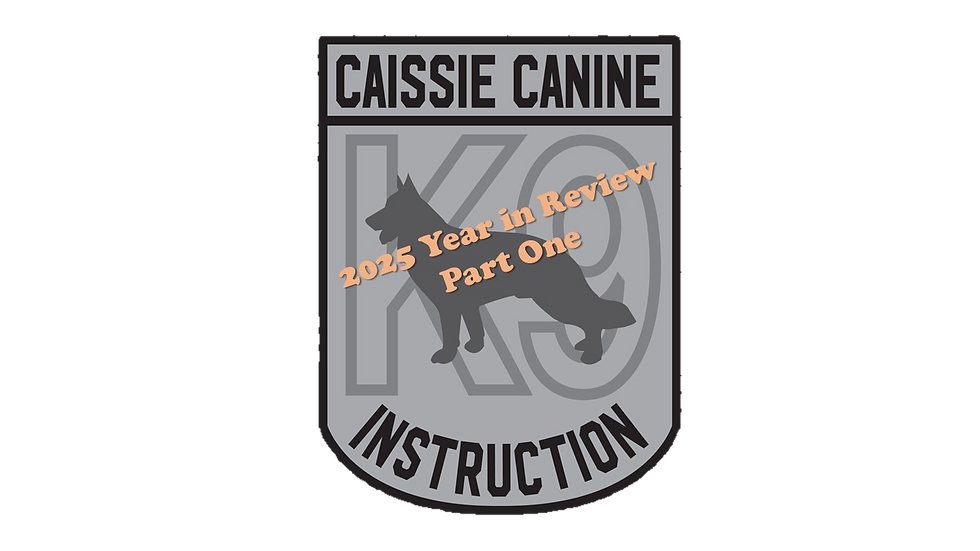Caissie Canine Instruction: Doggie Kisses
- caissiecanineinstr

- Jan 31, 2022
- 3 min read

We begin this week’s “RUFF TAILS” featuring a beautiful Rottweiler named Bentley.

My family calls me their naughty Rotti. I am not their first Rottweiler, but I have heaps and heaps of energy.
I am doing my training to improve my behaviour to ensure I understand boundaries. I am learning new rules, while getting lots of love and attention.

I keep my family on their toes, as I love to play, play, and play ALL DAY!!!!
***************************BONUS FEATURE************************************
K9 Corner with Paul Caissie: Basic Foundational K9 Training
I have always been a firm advocate of having all your foundational training done before your K9 is 2 years of age. Did you know your K9 from 0-2 years of age grows equivalent to 0-21 human years. Your puppy in these 2 years, ages from a puppy, infant, adolescence, teenager to young adult. That is an extreme change in mental and physical growth.

It is important to start the behaviour modification process as soon as your puppy comes home. Once the puppy session is completed this allows you to lay down the proper behaviour modification foundation. When your puppy is around 6 months, I usually recommend e-collar training, which will continue this process with proper off and on leash behaviour.
If you acquire an older K9 or rescue K9 I would suggest that you immediately start a training program to ensure a proper pack bond and to provide good pack leadership.
WITHOUT CONTROL, YOU DO NOT HAVE OBEDIENCE. WITHOUT BOTH (CONTROL OR OBEDIENCE) you do not have a Caissie K9 dog.
*************************************************************************
Welcome to Doggie Dialogue:
Do you know “kisses” in canines date back thousands of years. This behaviour started between dogs themselves as this behaviour would indicate social status and harmony within the pack.

Mother’s would lick or kiss their puppies to stimulate them to start breathing when first born. Puppies would lick or kiss their mother as a precursor for feeding.

This behaviour will continue into adulthood with whomever the primary caretaker is.
“Kissing” can be a learned behaviour as well. Owners who have a puppy at home will sometimes encourage their pup to give “kisses” with a great deal of encouragement and cheers, therefore the pup learns early on and will carry this behaviour into adulthood.

“Kissing” can be a sensory behaviour as dogs explore the world with their mouth and noses. Dogs that give short kisses around your mouth are actually gathering information.

For example: who were you with?, what did you just eat? etc… Some dogs only kiss if they like the smell of a certain body lotion, sunscreen, or have a whiff of what you are eating.
Your dog may even lick your skin because it is extra salty that day, and most dogs find that intriguing. Daisy loves salty feet. LOL.
Some breeds “kiss” more then others. Labradors, Retrievers, Terriers, Collies, Greyhounds, and English Mastiff’s are all at the top of the list. I personally find, all dogs like to “KISS”, so get ready.

There are certain boundaries that each family will maintain in their household when it comes to “kisses”.

Most people do not like their canine to come too close to the babies face or small children, as accidents can happen. Dogs do not like anyone invading their personal space and little ones sometimes get too close.
Remember, no matter how much you love your dog, do not force the kissing behaviour onto your canine, as this can make them feel a little nervous and they could lash out.
Dogs will mostly show affection and give kisses when at home in a relaxed atmosphere.

“Kisses” are usually accompanied with butt wiggles and expressive behaviour.
Remember let you canine initiate the “first move.”




Comments